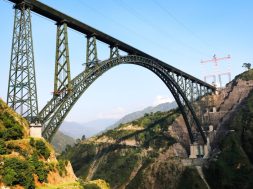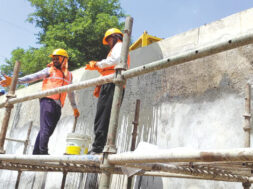More failures happen due to poor application of materials

Waterproofing costs one 1% of the overall building cost. But it causes 80% of the headaches. And most failures happen either due to a faulty choice of materials, design, or application, says Gautam Eunny, Vice President, Pidilite Large Users Business.
Gautam Eunny shares his expert insight on how to avoid waterproofing failures in high rise basements and substructures.
The external areas in high rises are difficult to reach. So, when it comes to external waterproofing, what additional support is desired to ensure that external waterproofing can be done efficiently
The reason we are seeing more problems today is because of the fast pace of construction. The pace at which concreting is being done leaves it more susceptible to cracking, sand quality going bad and so on. Construction shafts are an important area that is mostly ignored by even engineers. It is a vulnerable area where a lot of installations and inserts happen. So this is an area that needs focus. waterproofing for high rises facades has to be synchronised with the whole plastering and painting sequence. More so because once the scaffolding is removed, it’ll become difficult to access.
Now that most buildings are being developed and re-developed as high rises, how has the industry responded in terms of innovations in waterproofing?
First and foremost, basements and substructures are the most difficult surfaces to waterproof in high rises. So, waterproofing basements have evolved from the old shabar, bitumen based membranes to now HDD based, pressure sensitive adhesive membranes which make the work a lot easier. We are headed towards self healing type of membranes. We’re also looking at some kind of liquid applied solutions that could make application easier. introducing some very good injection systems, with respect to retaining narrow basement walls, can plug any potential issues during the course of its life.
When it comes to the rest of the surfaces, we are quickly moving from cementitious coatings, to polyurethane and hybrid polyurea coatings. These are very advanced materials, and the results are also quite encouraging in terms of their performance.
For exteriors, usual paints will not last very long, a lot of repainting will be needed. But nowadays, polymerized acrylic coatings have come up. These are much more flexible. Unlike paints, coatings are thick. They provide much better longevity and weather proofing compared to usual paints.
What can be said about the awareness developers and professionals have about efficient waterproofing solutions?
The awareness and the intent is definitely there, but It’s not limited to the choice of a type of material to be used but also finding potential risks down the line and mitigating them in the design stage of the building itself.
Waterproofing costs one 1% of the overall building cost. But it causes 80% of the headaches. And most failures happen either due to a faulty choice of materials, design, or application. The important warranty, no matter what you have on paper, is the choice of an applicator. Do they have the skilled manpower to do the job and are they trained enough to do the job? If these questions are answered, they become the biggest insurance against waterproofing problems.
Cookie Consent
We use cookies to personalize your experience. By continuing to visit this website you agree to our Terms & Conditions, Privacy Policy and Cookie Policy.









